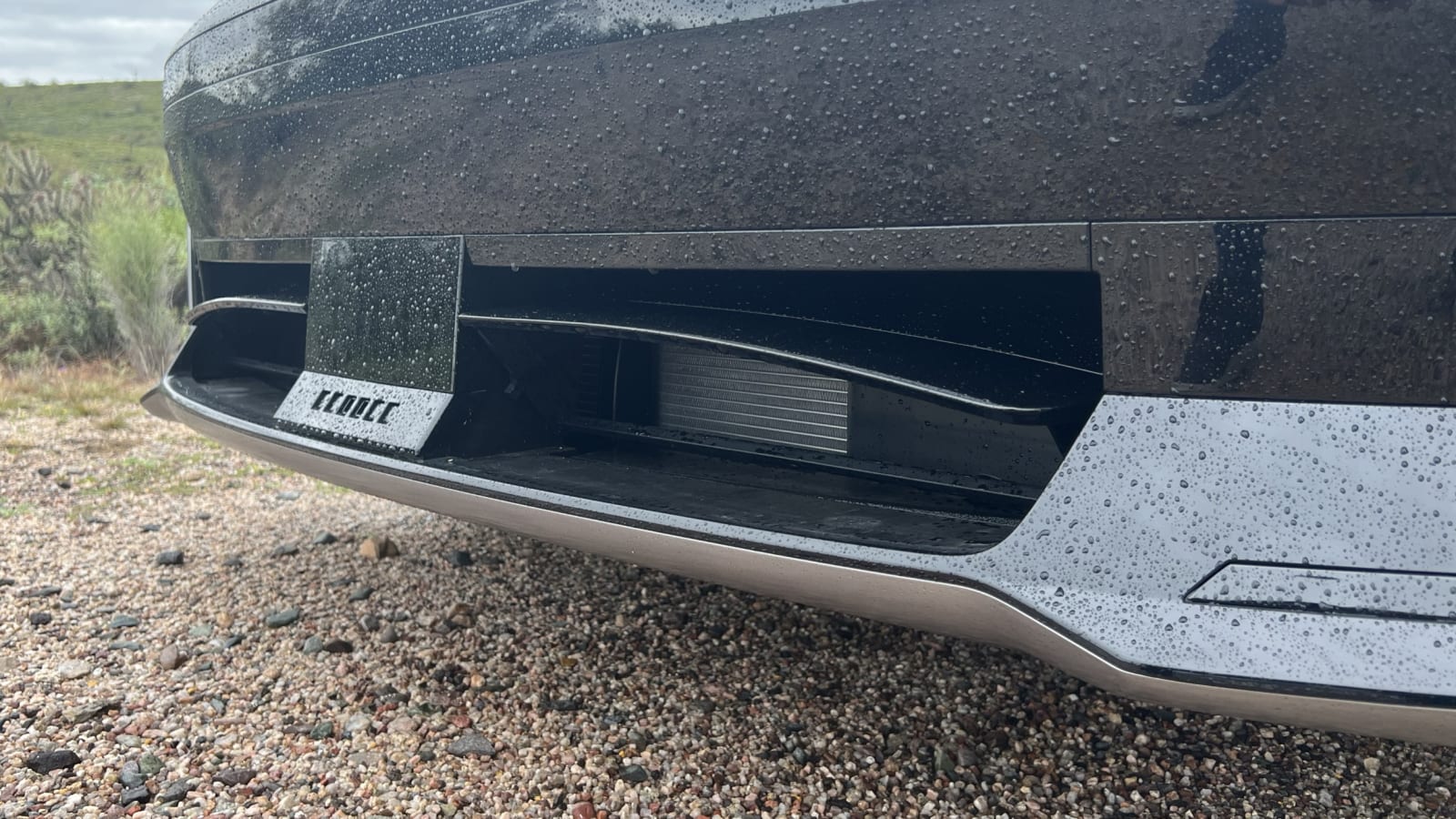2023 Hyundai Ioniq 6 First Drive Review: Slippery sedan adds big range

SCOTTSDALE, Ariz. — What do you see when you look at the Hyundai Ioniq 6? Even if you know what’s under the skin, it doesn’t visually evoke just another iteration of the Ioniq 5, with which it shares the same Hyundai group E-GMP electric platform. Ditto the Kia EV6 or Genesis GV60. If you’re particularly susceptible to the powers of suggestion, Hyundai would have you associate it with airplanes, and its “electric streamliner” description might push you further in that direction. On the other hand, your keen marketing BS detector might have you rejecting those convenient associations. The Ioniq 6 is, after all, just a reskinned 5, right? And that’s probably enough reason to like it, despite its sedan form factor presumably offering less utility than its crossover-disguised-as-a-hatchback sibling.
But with little to distinguish the Ioniq 5 and 6 on paper at first glance, it’s almost unsettling to see how closely they align in price. Are we really just choosing between body style and design?
Pricing and configurations for the Ioniq 6 for the most part mirror those of the Ioniq 5. The starting point for the 6 is $42,715 (including $1,115 in destination) for the SE trim with the standard range battery and rear-wheel drive. Its 53-kilowatt-hour battery is good for an EPA-estimated 240 miles on a full charge, with its single motor producing 149 horsepower — slightly less than the base Ioniq 5’s 168 horsepower — and 258 pound-feet of torque.
Moving up from there, everything else gets the longer-range battery with a capacity of 77.4 kWh. Regardless of trim, the RWD version’s single motor provides 225 horsepower and 258 pound-feet of torque. The dual-motor and therefore all-wheel-drive versions get a healthy 320 total horsepower and an impressive 446 pound-feet of torque.
Where it starts to get really interesting is in the estimated range figures. The SE trim, with its 18-inch wheels and $46,615 starting price, will go a bladder-bursting 361 miles on a single charge in RWD guise, while the $50,115 AWD version will do a still impressive 316 miles. Moving up to the rear-drive SEL ($48,815) and Limited ($53,715) results in a lower estimated 305 miles due to their 20-inch wheels, which is almost identical to the range of the Ioniq 5 (303 miles) with its 19-inch shoes. The AWD versions of the SEL ($52,315) and line-topping Limited ($57,215) get a still respectable 270 miles of range, 3 miles more than the Ioniq 5. Regardless of the battery or drivetrain, the Ioniq 6 will still charge from 10% to 80% in 18 minutes using a 350-kW DC fast charger — peak charging for the long-range battery is about 235 kW.


Wheel size accounts for part of the Ioniq 6’s impressive range, as does the increased efficiency of a new generation of silicon-carbide chips. But just looking at the car, it’s impossible to ignore the aerodynamics at play. Obviously, the Ioniq 6’s shape is far sleeker than that of the 5. In addition to its streamlined silhouette, beginning with a deeply bowing nose and terminating in a rear spoiler with winglet, the Ioniq 6 uses other aerodynamic tricks to keep it slippery. On the lower front fascia are active air flaps, with air curtains toward the bumper edges. A little lip ahead of the front wheels reduces the air gap, and aerodynamic wheel covers help the air slide on by. On the sides just ahead of the rear bumper are “flow separation traps” that help manage the flow of the air around the rear. In all, the Ioniq 6 achieves an impressive drag coefficient of 0.22, on par with the Porsche Taycan and slightly behind the Tesla Model S, Mercedes-Benz EQS and Lucid air.
It’s not what we were thinking, but apparently enough people have commented that the Ioniq 6 evokes the Porsche 911 that Hyundai VP and head of the Hyundai Design Center, Hak Soo Ha, addressed what he called the “elephant in the room” in front of the media gathered in Scottsdale. “When you … get on the Boeing airplane or Airbus airplane, you’re never asking, ‘Who copied who?’ Because air is air.” And that is what led to the Ioniq 6’s shape. In this vein, he said the 6 was inspired by planes, a football and, in the automotive realm, the Stout Scarab. Nevertheless, the wonderful attendants who would grant us entry into McDowell Mountain Park even noted the similarities to the Porsche.
When Ioniq 6 photos were released, it was hard not to wonder how its teardrop form would affect its livability. Even seeing it in person, the question of interior space lingered until opening the rear door. “Holy s***,” was the first utterance at the sight of the sheer amount of space between the rear seat cushions and the front seatbacks. And that was with the front seats pushed pretty far rearward. Indeed, a tall person could more than comfortably sit behind another equally long-legged person. Well, as long as they aren’t long in the torso or fond of wearing big hats. Headroom is in short supply, especially the closer one sits to the dashboard.
We started this rainy drive in a Limited AWD. If you’ve driven the Ioniq 5, or the Kia EV6, you pretty much know what to expect in terms of acceleration. It’s not neck-snapping quick, but a 5-second 0-60 sprint is plenty to elicit joyous chuckles from occupants. Pushing the Ioniq 6 through corners, the sheer amount of grip it displays is delightful, even on the wet desert pavement. It feels more glued to the road than the tail-happy shenanigans we were able to coax from the Ioniq 5. The suspension tuning is a treat, too. It’s stiff enough to trace the undulations of the road, but anesthetized to cracks, manhole covers and other imperfections. The 6’s character in motion happily reflects its sporting exterior, and complements its torque-rich powertrain.
Almost as fun as hustling the 6 down rainy desert roads was catching up with others in our cohort, and watching the identical vehicle in action. There’s something about seeing that sculpted tail drop under acceleration, and the spray from the rear tires cyclone up then inward before dispersing entirely, knowing whatever motorist behinds us was witnessing the same phenomenon.




Later, we traded our top trim for the longest-range version of the Ioniq 6, the SE RWD with the same 77.4-kWh battery. From the exterior, there’s not much to help differentiate it from the AWD version apart from its 18-inch wheels. Inside, the SE swaps the Hi-Tex seating material for a simple cloth. It also ditches the sunroof, making the headroom situation slightly less cramped. The rest of the interior looked basically identical — same materials, same designs, same layout, even the same dual screens. It wasn’t until driving that the differences became apparent, in powertrain, of course, but also in absent tech features like the blind-spot camera, auto windshield wipers and heated steering wheel.
While not as quick as the more powerful AWD versions, the RWD is still no slouch, scooting to 60 mph in just about 7 seconds. Even in the rain, it took a full foot to the floor in a corner to get the rear tires to slip loose in any noticeable fashion, and even then everything was reeled in with assuring alacrity. The connection with the road isn’t quite as razor sharp as the Limited on its 20-inchers, which might be a deficiency in a venue like the Angeles Crest Highway or a boon on Michigan’s disheveled infrastructure, but made little difference in the Arizona desert. Take your pick.
Considering just how much range is available, and how little is sacrificed in terms of comfort and convenience, it’s hard not to favor the lower-cost SE RWD with the long-range battery. Some of the higher trims’ features are bound to be missed, but getting an extra 56 miles out of the same pack (or 46 miles if you’re comparing AWD trims) for $2,200 less than the SEL and about $7,000 less than the Limited seems like a damn good deal.
At the end of the drive, it was noticeable just how clean the car’s paint remained, apart from the rear. Everywhere else — the nose, the doors, the rear fenders — was squeegeed clean by the constant blow-dry of the atmosphere it plunged through. Just the rear fascia below the ski-jump spoiler was speckled with dust-ringed water spots sprayed up from the road. It felt special.
So, damn it, which do you pick if forced to choose: the Ioniq 5 or 6? Having driven them both, it’s not a question that we even want to entertain anymore, but it’s one that we’d feel envious of someone who had to make it. It’s more complicated than just hatchback utility (Ioniq 5) vs. better efficiency (Ioniq 6). There’s the wildly different styling to be considered, as well as the fact that the 6 has a ride to match its sporting aesthetics. But if you’re unburdened by the necessity to haul bulky cargo, and you like the smooth curves of the 6 to the blocky retrofuturism of the 5, your choice should be easy.
Related video:




